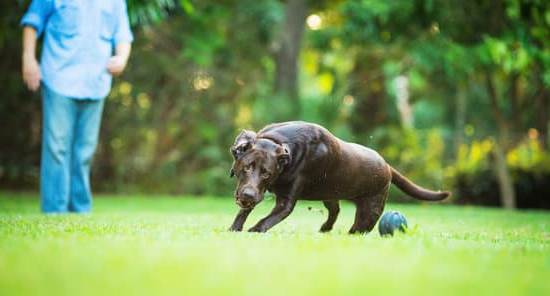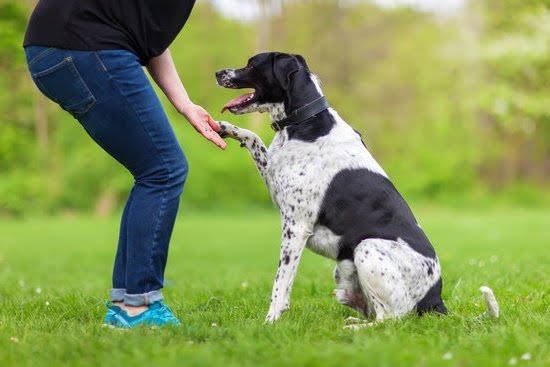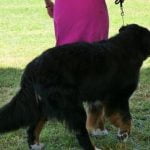Bird dogs are known for their intelligence, loyalty, and exceptional hunting skills. But when is the right time to start training these remarkable animals? Understanding the importance of training your bird dog at the right age is crucial for their development and behavior. Training a bird dog requires careful consideration of their age, developmental stages, and physical readiness.
The critical developmental stages of a bird dog play a significant role in how they learn and behave. Different age groups require tailored training methods to ensure optimal results. Starting training at a young age is essential for early socialization, shaping their behavior, and building a strong foundation for future advanced training.
In this article, we will explore the impact of age on a bird dog’s learning abilities and behavior. We will discuss the importance of early socialization for shaping their temperament and behavior, as well as basic obedience training to set a solid foundation for future advanced training.
Additionally, we will delve into assessing physical readiness and tailoring training techniques to different age groups. Lastly, we will touch on advanced training for adult bird dogs and adapting methods for older bird dogs while emphasizing the role of consistency and patience throughout the training process.
The Critical Developmental Stages of a Bird Dog
When it comes to training a bird dog, understanding the critical developmental stages is essential for setting your furry companion up for success. The age at which you begin training your bird dog can have a significant impact on their learning ability and behavior.
Here are some key points to consider when it comes to the critical developmental stages of a bird dog:
1. Early socialization is crucial: Starting training at a young age is important for a bird dog’s behavior and temperament. It helps them develop positive social skills and adaptability, making them well-rounded companions both in the field and at home.
2. Basic obedience training sets the foundation: Beginning basic obedience training when your bird dog is young sets a solid foundation for future advanced training. This includes commands such as sit, stay, come, and heel, which are essential for effective communication between you and your bird dog.
3. Tailoring training techniques to different age groups: As your bird dog grows, their learning abilities and physical capabilities also change. It’s important to tailor your training methods to suit their age and stage of development, whether they are a young puppy, adolescent, or adult bird dog.
By understanding these critical developmental stages, you can ensure that you are providing the right type of training at the right time in order to maximize your bird dog’s potential as a skilled hunting companion or beloved family pet.
Early Socialization
The early socialization of a bird dog is crucial for their overall behavior and temperament. Training at a young age can have a significant impact on how a bird dog interacts with people, animals, and their environment. Here are some key reasons why starting training at a young age is important:
- Socialization: Introducing the bird dog to various people, animals, and environments at a young age can help prevent fearfulness, aggression, and shyness in their later years.
- Bonding: Early training allows for strong bonds to form between the bird dog and their owner or trainer, creating a foundation of trust and mutual respect.
- Confidence building: Exposing young bird dogs to different stimuli in a positive way can help build their confidence and adaptability, making them more well-rounded and less prone to anxiety or stress.
It is essential for owners or trainers to use positive reinforcement techniques during this early socialization period. This can include rewards such as treats, praise, toys, or playtime when the bird dog displays desirable behavior. Consistency in training methods is also crucial during this stage to ensure that the bird dog learns appropriate behaviors from an early age.
Ultimately, starting training at a young age sets the groundwork for a well-behaved and socially adjusted bird dog in the future. Being proactive about socializing and training your bird dog during their formative months can lead to numerous benefits in the long run.
Basic Obedience Training for Young Bird Dogs
The early stages of a bird dog’s life are critical in shaping their behavior and temperament, making it essential to start basic obedience training at a young age. By starting training early, you can establish a solid foundation for future advanced training and ensure your bird dog develops good habits from the start.
Basic obedience training for young bird dogs typically involves teaching them commands such as sit, stay, come, and heel, as well as addressing common behavioral issues like jumping or barking excessively.
It is important to keep in mind that young bird dogs have shorter attention spans compared to older dogs, so training sessions should be kept short and fun to prevent them from getting bored or frustrated. Positive reinforcement techniques such as using treats and praise can be highly effective in encouraging good behavior and reinforcing commands. Consistency is also key when training young bird dogs, as they thrive on routine and clear expectations.
In addition to teaching basic commands, early obedience training also helps socialize young bird dogs with other animals and people. Exposing them to different experiences in a positive way during this developmental stage can help prevent fear or aggression issues later on. It is crucial to create positive associations with new stimuli and environments to build their confidence and develop a well-rounded adult bird dog.
| Training Age | Key Training Considerations |
|---|---|
| Youth (2-6 months) | Focus on house manners, potty training, crate training, introduction to basic commands |
| Puppy (6-12 months) | Continued focus on basic obedience (sit, stay, come), leash training, socialization |
| Young Adult (1-2 years) | Add more advanced commands (heeling, extended stays), refine obedience skills, |
Physical Readiness
Physical Development
Before starting any kind of training, it is important to consider the physical development of the bird dog. Different breeds mature at different rates, so it’s essential to understand when your specific breed reaches physical maturity. Training a bird dog before they are physically ready can lead to potential health issues or injuries, so it’s important to be patient and allow them to fully develop before beginning more rigorous training exercises.
Mental Preparedness
In addition to physical readiness, assessing the bird dog’s mental preparedness is equally important. A young dog may not have the attention span or impulse control needed for intensive training sessions. It’s crucial to gauge their ability to focus, follow commands, and respond positively to basic obedience exercises before moving on to more advanced training.
Exercise and Activity Level
Understanding the bird dog’s exercise and activity level is also vital in assessing their readiness for training. Dogs with high energy levels may need more frequent breaks during training sessions, while older dogs may require a slower pace of exercise with longer rest periods. Tailoring the training program to the individual dog’s needs will ensure a successful and positive experience for both the owner and their bird dog.
By carefully evaluating both the physical and mental readiness of a bird dog, owners can create a customized training plan that meets their pet’s individual needs while also setting them up for success in their future as hunting companions or family pets.
Training Techniques for Different Age Groups
When it comes to training bird dogs, it is crucial to tailor your training methods to the age and stage of development of the dog. Puppies, adolescent dogs, and adult dogs all have different learning abilities and physical capabilities, so it’s important to adjust your training techniques accordingly.
For puppies, socialization is key. Exposing them to different environments, people, and animals at a young age can help prevent behavior issues later on. Positive reinforcement and gentle, consistent training will set a solid foundation for future learning. Basic commands such as sit, stay, come, and leash walking should be introduced during this stage.
Adolescent dogs go through a rebellious phase similar to human teenagers. They may test boundaries and push limits, so patience is key during this stage. Consistent training with positive reinforcement is still important, but more advanced obedience training can be introduced at this stage. It’s also a good time to introduce more complex exercises that challenge their mental and physical abilities.
| Age Group | Training Focus |
|---|---|
| Puppies | Socialization, basic obedience |
| Adolescent Dogs | Advanced obedience, mental & physical challenges |
Advanced Training for Adult Bird Dogs
Advanced Training Techniques
Once your bird dog has mastered basic obedience commands and has shown physical and mental readiness, it’s time to take their training to the next level. Advanced training for adult bird dogs can include more complex commands, refining hunting skills, agility training, and advanced scent work. These advanced techniques not only improve your bird dog’s performance but also provide mental stimulation and challenge, keeping them engaged and fulfilled.
Refining Hunting Skills
For many bird dog owners, hunting is a primary reason for owning a bird dog. Advanced training for adult bird dogs should focus on honing their hunting skills, including advanced retrieval techniques, tracking scents over longer distances, and learning to work with different types of game birds. This type of training requires patience and persistence but can lead to a well-rounded and skilled hunting companion.
Agility Training
Agility training is not just for competition dogs – it can benefit all breeds, including bird dogs. This type of training involves navigating obstacle courses, jumping through hoops, weaving through poles, and balancing on elevated platforms. Agility training strengthens a bird dog’s physical abilities while also improving coordination and mental focus. It’s an excellent way to keep adult bird dogs active while building a stronger bond between owner and pet.
As your bird dog matures, advanced training becomes crucial in maintaining their physical health and mental sharpness. It’s important to remember that every bird dog progresses at their own pace, so patience and consistency are key when taking their training to the next level.
Training Older Bird Dogs
As bird dogs age, their physical and mental abilities change, requiring adjustments to their training methods. Older bird dogs may experience decreased mobility, reduced stamina, and changes in cognitive function, making it necessary for owners to adapt their training techniques. Understanding the limitations of aging bird dogs is crucial to ensure their safety and well-being during training sessions.
One important aspect to consider when training older bird dogs is to adjust the intensity and duration of training sessions. As a dog ages, they may not be able to handle long or strenuous training sessions as they once could. It is essential for owners to be mindful of their older bird dog’s physical limitations and provide frequent breaks during training to prevent exhaustion or injury.
Furthermore, incorporating mental stimulation exercises into the training routine can help keep an aging bird dog’s mind sharp. Engaging in activities that challenge their cognitive abilities, such as puzzle toys or scent work, can provide mental stimulation while being gentle on their aging bodies.
Additionally, focusing on reinforcing previously learned commands rather than introducing new ones can help maintain the older bird dog’s confidence and sense of accomplishment during training sessions. By adjusting training methods to accommodate an aging bird dog’s needs, owners can continue to engage and bond with their loyal companions while considering their changing capabilities.
The Role of Consistency and Patience in Training Bird Dogs of All Ages
Consistency and patience are essential components when it comes to training bird dogs of all ages. Whether you are working with a young puppy or an older adult bird dog, these two factors play a crucial role in the success of your training efforts.
Consistency in your commands, expectations, and rewards will help the bird dog understand what is expected of them, leading to better learning and retention. Patience is equally important, as not all bird dogs will progress at the same pace, and it’s important to give them the time they need to understand and execute commands.
For young bird dogs, consistency and patience are especially important during the early socialization and basic obedience training stages. These formative periods set the foundation for a bird dog’s future behavior and learning capabilities. By consistently reinforcing desired behaviors and patiently working through any challenges, you can help your young bird dog develop into a well-behaved companion.
As a bird dog enters adulthood, ongoing consistency and patience remain crucial for advanced training. Establishing clear expectations and maintaining a patient approach will ensure that your adult bird dog continues to learn new skills and behaviors effectively.
Additionally, for older bird dogs, adapting training methods to accommodate any physical limitations while still remaining consistent with commands and patient in their progress is key to successful training outcomes. Overall, regardless of age, maintaining consistency in training techniques while displaying patience throughout the process will lead to more successful results with your bird dog.
Conclusion
In conclusion, it is clear that age plays a crucial role in the training of a bird dog. Understanding the critical developmental stages of a bird dog and how age impacts learning and behavior is essential for successful training.
It is important to start early with the socialization and basic obedience training of young bird dogs in order to set a solid foundation for future advanced training. By starting at a young age, you can positively influence your bird dog’s behavior and temperament, leading to optimal results in their training.
As the bird dog grows and develops, it is important to assess their physical and mental readiness for training. Tailoring training techniques to different age groups and stages of development will ensure that the methods used are appropriate for the bird dog’s capabilities. Additionally, as the bird dog ages, it is vital to adapt training methods for older dogs and understand their limitations.
Consistency and patience are key factors in successfully training bird dogs of all ages. By staying consistent with the training process and being patient with your bird dog, you can achieve positive outcomes in their behavior and performance.
It is important to remember that training a bird dog is an ongoing process that requires dedication and understanding of the impact of age on their abilities. Starting early and considering age throughout the training process will ultimately lead to the best results for both you and your beloved bird dog.
Frequently Asked Questions
What Is the Best Age to Start Training a Bird Dog?
The best age to start training a bird dog is typically around 6-8 weeks old. This is when they are at an ideal age for socialization and basic obedience training. Starting training at this age can help establish good behavior and listening skills early on, setting the foundation for more advanced training later on.
How Late Can You Train a Bird Dog?
It is generally recommended to start training a bird dog as early as possible, but it’s never too late to begin. Even older bird dogs can benefit from training, whether it’s for hunting purposes or just to improve their behavior and obedience. With patience and consistency, bird dogs of any age can still learn and adapt to training.
What Is the First Thing to Train a Bird Dog?
The first thing to train a bird dog is typically basic commands such as “sit,” “stay,” “come,” and “heel.” Establishing these fundamental commands sets the stage for more advanced training in the future.
It’s important to prioritize building a strong foundation of obedience and communication with the bird dog before moving on to more specialized skills related to hunting or retrieving.

Welcome to the blog! I am a professional dog trainer and have been working with dogs for many years. In this blog, I will be discussing various topics related to dog training, including tips, tricks, and advice. I hope you find this information helpful and informative. Thanks for reading!





